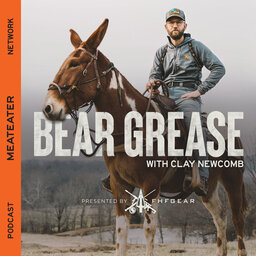Ep. 170: Bear Grease Classics: The Myth of the Southern Mountain Lion
Bear Grease has been a surprising and rewarding journey of almost three years. Today we’re going back to the beginning with Episode 1: The Myth of the Southern Mountain Lion, with a peek into the genesis of Bear Grease.
There are two types of people in the South—those who’ve seen mountain lions and those who haven’t. Supposedly extirpated from the South, the native lion species has lived on through backwoods lore and many believe they’ve never left. But have they? Clay Newcomb explores the touchy topic, interviewing biologists, investigating two eye-witness sightings, and talking with a psychologist about how people can see things that aren’t real. This is a lesson in biology and human nature and a great story revealing the truth about South mountain lions.
Connect with Clay and MeatEater
Clay on Instagram
MeatEater on Instagram, Facebook, Twitter, and Youtube
Shop Bear Grease Merch
 Bear Grease
Bear Grease


